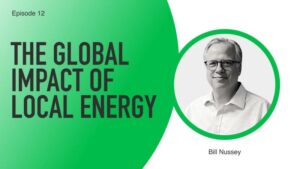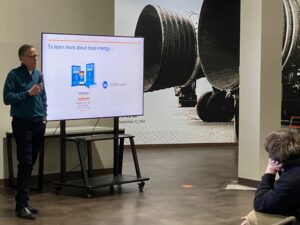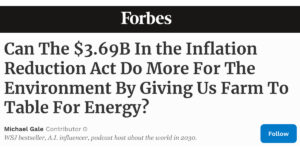“Ask Asa” is a long running segment created and hosted by Asa Aarons that has been featured throughout the United States for decades. WJCL is an ABC television affiliate located in Savannah, Georgia.
“Solar is a way of life for millions of people. In fact, Georgia ranked 5th in the nation for solar installations last year. New federal tax credits should persuade more people to welcome the sun. Consumer Reporter Asa Aarons Smith explains.“
See the full interview on WJCL’s website: https://www.wjcl.com/article/ask-asa-solar-could-save-money-and-the-planet/40983541 as well as the second part that aired a week later.

One must face facts boldly, and the fact is we’re running out of fossil fuels. Petroleum, natural gas, coal — these are all finite resources.
So what about the giant energy machine in the sky? Why not better use the sun?
That’s the question former tech CEO Bill Nussey has been asking. Atlanta-based Nussey traveled the world studying the creation and use of energy sources. His book, Freeing Energy, argues our future energy supply is orbiting about 92 million miles above us.
“The earth gets more solar energy in eight hours than the entire civilization uses for all kinds of energy for an entire year,” he said. “Solar is abundant. It’s easy, and it’s universal. Everyone has it. Whether you live in Alaska or on the equator, there’s plenty of solar. What’s changed in the past 40 to 50 years is the price of photovoltaics, which are solar panels.”
To understand how things have changed, we need to step back to the 1950s. “The first use of solar panels was on US satellites, and that’s how the US started competing against Russia’s Sputnik. US satellites could stay in orbit much longer because they had solar cells and the Russian ones did not,” Nussey said.
Back then, solar was incredibly expensive. How expensive? About $75 a watt. Since then, solar panels and storage have become far more affordable.
“Today, the average price of a watt is maybe .15 or .20 cents. The price has declined 400 or 500 times in the past 50 years,” Nussey said.
What’s that mean to you and me? “Almost everywhere in the United States, in the world, it is typically cheaper to put solar on your roof to help power your house than it is to buy it from the grid. And that’s something very few people are aware of,” he continued.
We’re starting to see many examples of solar use. Savannah City Council recently approved a $6.2 million contract with Atlanta-Based Cherry Street Energy to add solar panels to 19 city-owned buildings. It’s an essential step in the city’s plan to have all its facilities powered with renewable energy sources by 2035.
“When we look back 10 or 20 years to today, we’ll realize this was not only a revolution to create jobs and resiliency for individuals and homes. It’s also one of the biggest business opportunities in the history of business,” he said.
Solar is poised to grow as other technologies have over the past few decades. “It’s going to look a lot like the rise of the internet, personal computers and smartphones,” he said.
Contrary to popular belief, solar can power a home or business 24 hours a day. Your house or business does not go dark when the sun sets. In my next report, we’ll dispel some solar myths and shine a light on some truths.
Solar is a way of life for millions of people. In fact, Georgia ranked 5th in the nation for solar installations last year. New federal tax credits should persuade more people to welcome the sun. Consumer Reporter Asa Aarons Smith explains.



